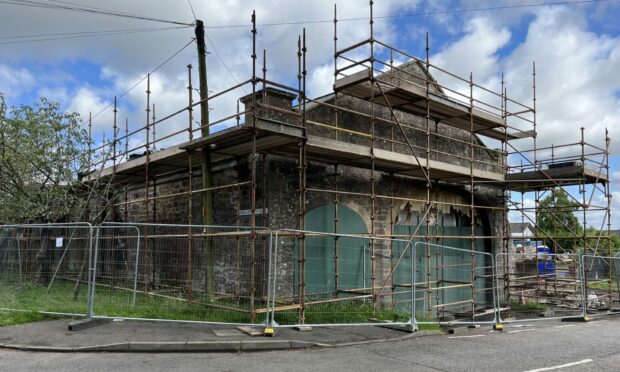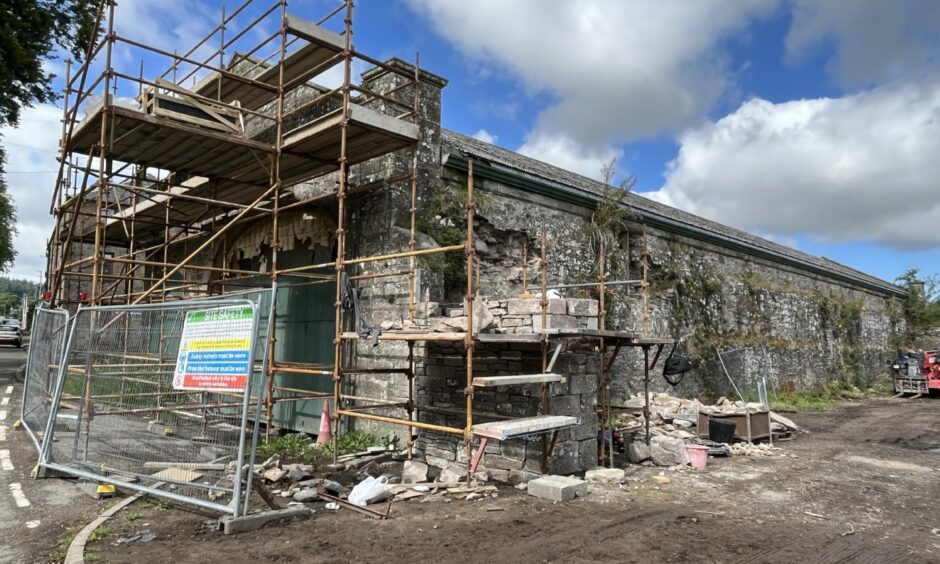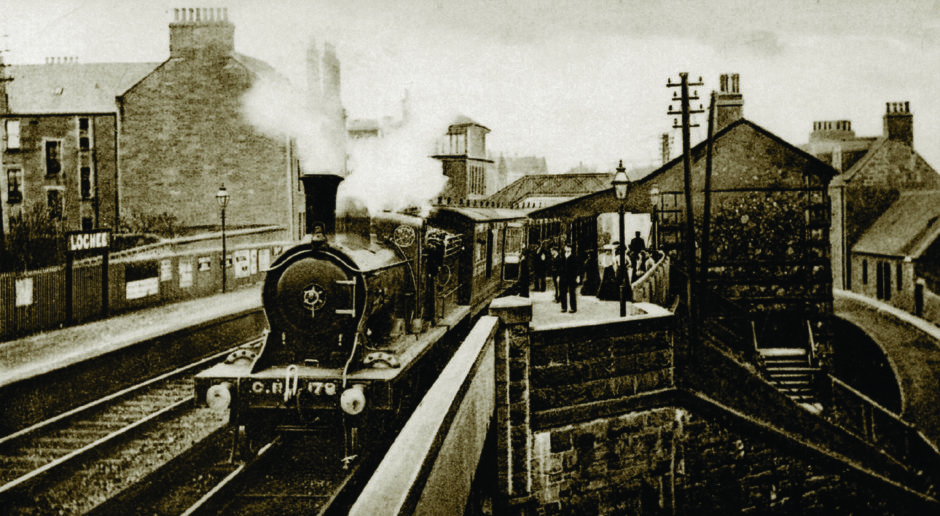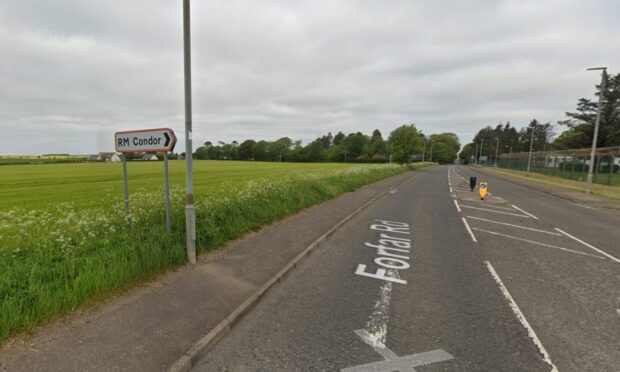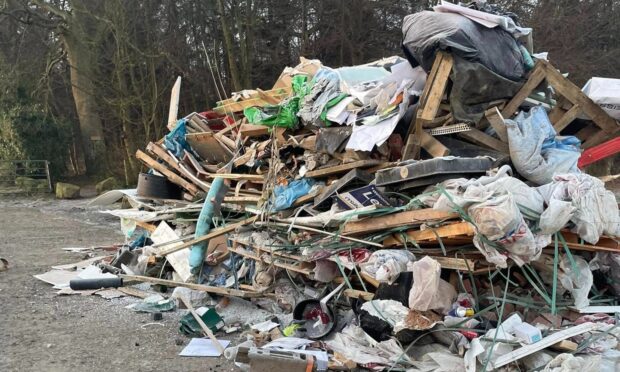The journey to turn one of Scotland’s oldest original railway buildings into family homes has begun.
Work is well underway on the old shed at Commercial Street in Newtyle – a key part of the original line between Dundee and the village on the border of Angus and Perthshire.
The B-listed building date back to the early part of the 19th century.
And after several failed redevelopment attempts it is being turned into six houses.
Planning background
Hopes of a new lease of life for the old shed go back almost 15 years.
In 2009, plans for a conversion to retail use were approved.
That was followed by the green light in 2016 for a proposal to create four storage units and an office in the large building.
It never progressed and in 2020 a four-house bid came forward.
The application was withdraw but, in 2021, Simco Inveraldie finally won approval for the six-home scheme.
However, early works revealed some of the stonework was in a poorer condition than first thought and a slightly revised plan was agreed.
The company aims to create a micro-community at the site, opposite the Commercial Hotel.
Work to replace the roof is well advanced, before builders turn their attention to creating the split-level, two-bedroom homes.
Important history
Railway experts believe the Newtyle building is probably Britain’s oldest trainshed still in existence.
It was the northern terminus for the Dundee and Newtyle Railway and is thought to have opened in the early 1830s.
Newtyle was the first railhead in the north of Scotland to use rope-hauled inclines, horses and locomotives to access Strathmore and the Sidlaws.
The station was at the north end of the Hatton incline.
Newtyle village sat to the west of the line.
To the east was the one-time Newtyle Mill, a bone processing plant which is now housing.
The line was extended west to Coupar Angus and east to Glamis.
By the 1870s the original station was closed to passengers and replaced by a three-platform one at the north of the village.
A line to Alyth junction remained open until the 1960s.
There are plans for a transport heritage plaque on the completed building.
It will recognise the old shed’s place in British railway history.
